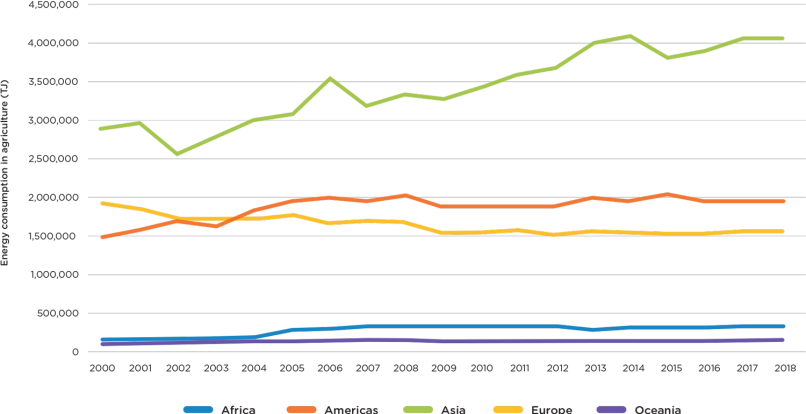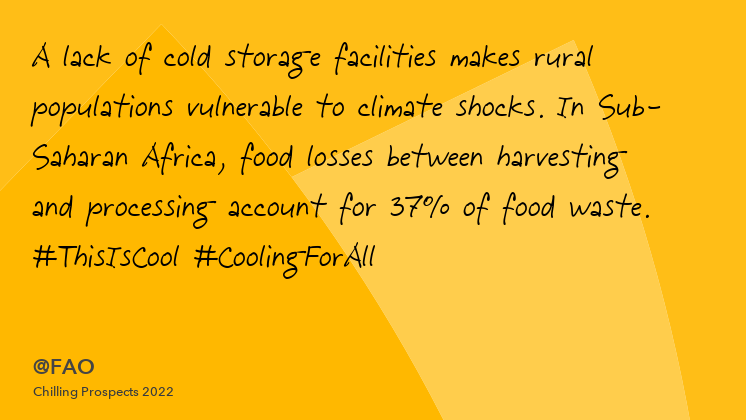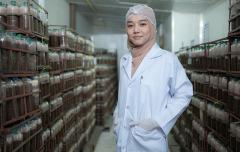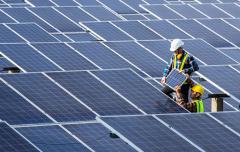Chilling Prospects 2022: Promoting sustainable agricultural food chains through the Energy Smart Food programme
|
Reflections on five years of the Kigali Amendment by the Food and Agricultural Organization of the United Nations (FAO) |
Energy is needed at all stages of the agri-food chain. The agri-food sector currently consumes 30 percent of the total energy demand globally, most of which is fossil fuel based. There are however differences in energy use patterns in the agri-food chain across regions. In developed countries, about a quarter of total energy is used in the production stage (crops, livestock and fisheries), 45 percent in food processing and distribution, and 30 percent in retail, preparation and cooking. In developing countries, a smaller share of energy is used in the production stage and a greater share for cooking.
Figure 1: Energy consumption in agri-food systems, by region, 2000–2018
While energy use in the agri-food chain increased by 20 percent between 2000 and 2018 globally, in Africa, it remained largely constant, accounting for only about 4 percent of global energy consumption (FAO, IRENA 2021). Limited energy access directly impacts local agri-food systems by reducing opportunities both to increase irrigation that would increase yields and to store food in temperature-controlled environments that would reduce food loss. This, in turn, limits food diversity.
While there is a need to increase access to energy to the agri-food chain in developing countries, following the conventional pathways of depending on fossil fuels will only exacerbate climate change. Renewable energy can be instrumental in increasing energy access in a way that minimizes greenhouse gas (GHG) emissions and it is becoming increasingly more affordable. The cost of electricity from solar PV and wind for instance decreased by 82 percent and 40 percent respectively between 2010 and 2019. (IRENA 2020).
The Food and Agricultural Organization’s (FAO’s) Energy Smart Food (ESF) programme aims to increase access to sustainable energy in food systems through innovative, green energy solutions that encompass improved energy efficiency, the use of renewable energy, increased circularity through waste-to-energy along agri-food chains, and a water-energy-food nexus approach.








